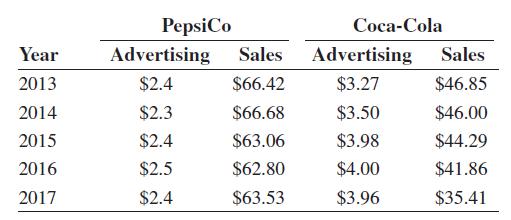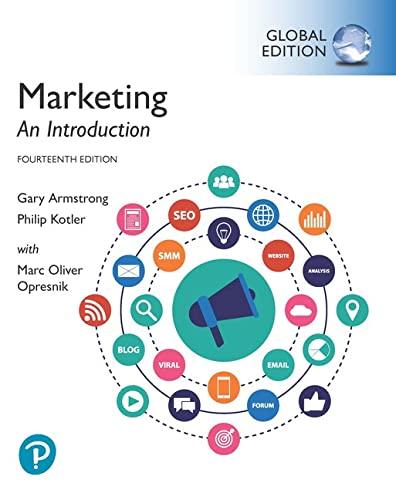Although consumption of carbonated beverages has been decreasing, it is still an $81 billion industry in North
Question:
Although consumption of carbonated beverages has been decreasing, it is still an $81 billion industry in North America, which far exceeds alternatives such as water ($23 billion) and sports drinks ($9.4 billion). That’s why Coca-Cola and Pepsi still battle it out. Coca-Cola’s market share increased from 17.3 percent to 17.8 percent during the past decade. That might not seem like much, but one share point equals 1 percent of market sales, so a half a share point represents $405 million. Pepsi’s market share decreased from 10.3 percent to 8.4 percent during the same period—a loss of 1.9 share points or $1.5 billion.
The war is not yet over, though. PepsiCo announced that it would increase its advertising budget for 2018. Many marketers budget an upcoming year’s advertising expenditures using a percentage-of-sales method based on past or projected sales.
The industry average advertising-to-sales ratio for beverages is 4.1 percent of sales. Below are the worldwide advertising expenditures and sales revenues for the two combatants (all numbers are in billions of dollars):

1.Calculate both companies’ advertising-to-sales ratios for each year. What is each company’s average ratio over the five-year period? Refer to the percentage-of-sales method to learn about this method.
2.PepsiCo decided to base its 2018 advertising budget on the industry average advertising-to-sales ratio for beverages, which is 4.1 percent. How much would PepsiCo have budgeted for advertising if the company based expenditures on last year’s sales? How much of an increase is that?
Step by Step Answer:

Marketing An Introduction
ISBN: 9781292294865
14th Global Edition
Authors: Gary Armstrong, Philip Kotler, Marc Oliver Opresnik





